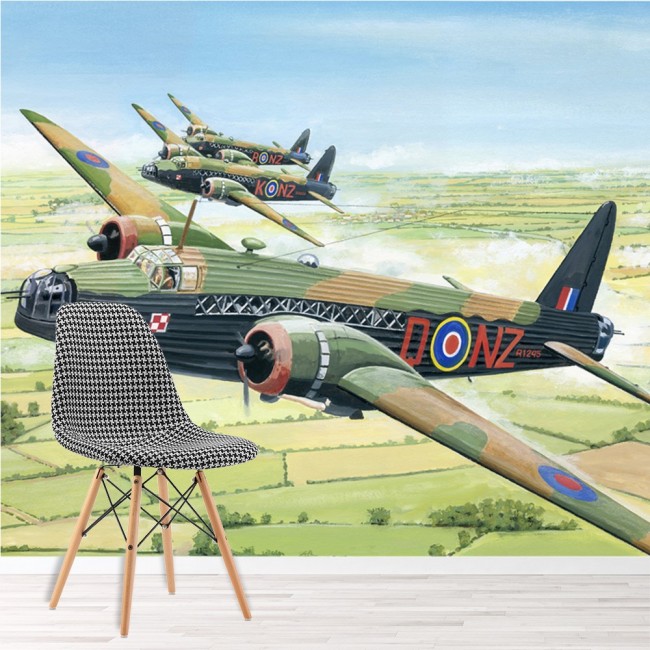
Speaking with Artist, Trevor Mitchell
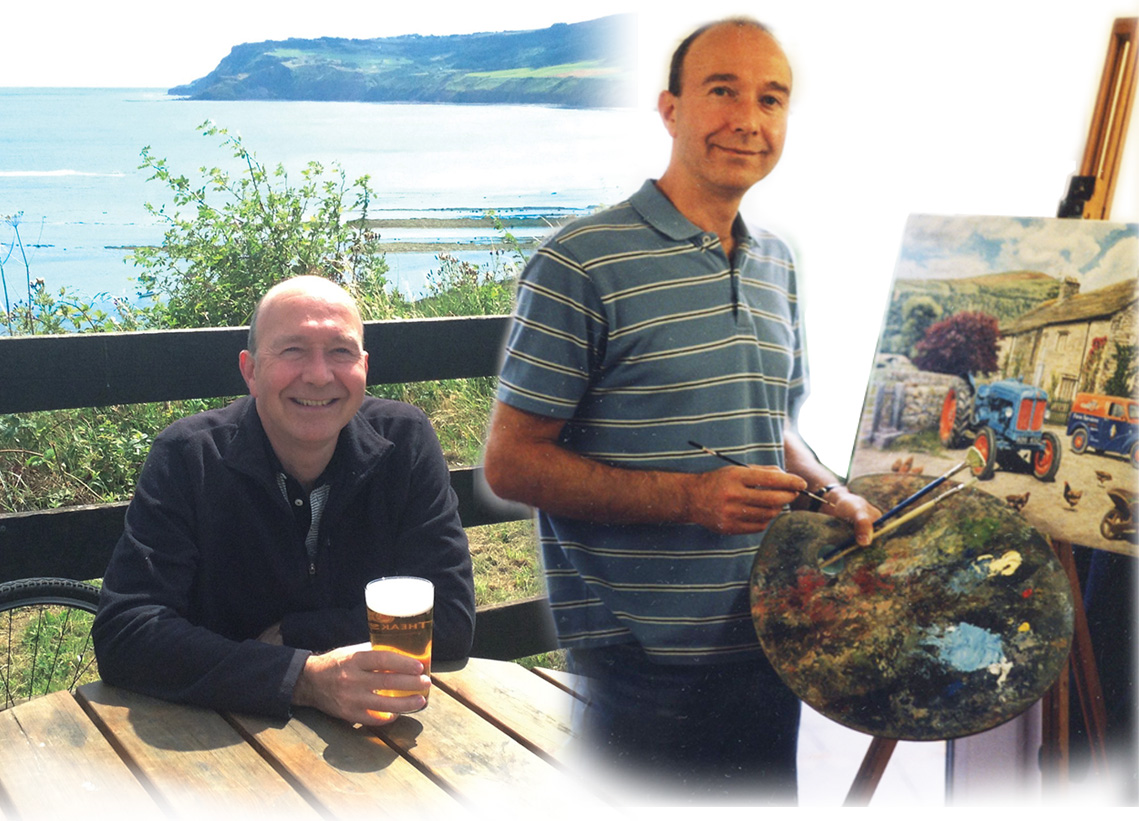
Trevor Mitchel is an incredible artist based in Yorkshire, England, who paints incredible images from times gone by. Largely focusing on the mid-twentieth-century, his work evokes a great feeling of nostalgia for simpler times.
We caught up with Trevor to discuss how he got into the industry, his move from the corporate world to freelance, how he stays focussed and much more.
Hi Trevor - Thanks for taking the time to speak to us. Can you start by introducing yourself and telling us a little bit about your life?
Well, first of all, thank you for taking an interest in my work. Painting pictures was my first love and I consider myself very fortunate to have made it my living. It’s all-consuming now, so the boundaries between work and play have long since disappeared.
When I’m not in my studio, my idea of a perfect day out is hiking around the glorious countryside of North Yorkshire, or a little closer to home on the moors. I also enjoy a weekly game of racquetball with friends and a couple of beers afterwards.
In my family life, I’m a husband, proud father of two beautiful daughters and I recently became a grandfather to an adorable baby girl. I grew up in and around Shipley in West Yorkshire, and apart from the two years spent in London, I have remained in the Aire Valley.
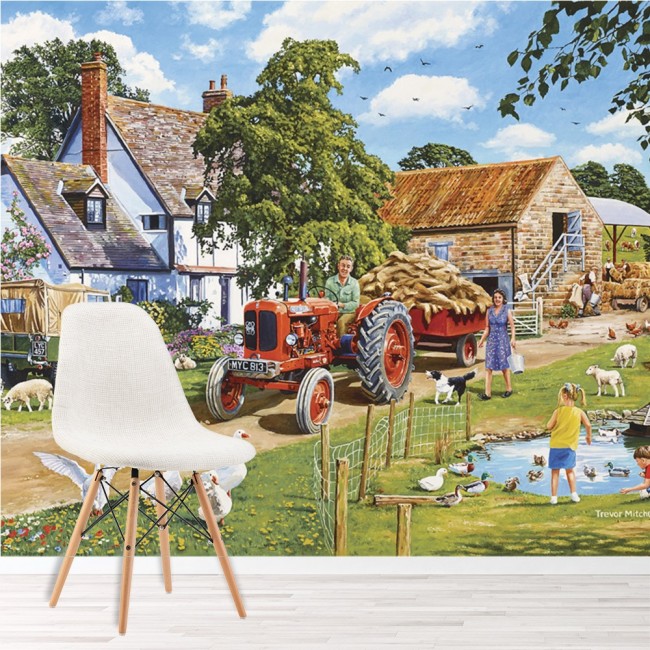
You worked in an advertising agency in London in the late 1970s and early 80s before moving back up north to freelance - Why did you swap the corporate life for freelancing?
I didn’t make the swap straight away, I left London to continue working as an art director in ad agencies and design studios closer to home in West Yorkshire. When we commissioned illustrators I got to know one or two, and just got the feeling I was on the wrong side of the fence. The work they were doing looked much more fun! Like I was doing as a hobby.
The appeal of self-employment grew when I was working in an ad agency that was badly run, meaning I was constantly having to work late, coupled with the growing realisation that it was all to line someone else’s pocket. So when the agency went into liquidation and I had the opportunity to go freelance, I jumped at the chance.
I went looking for commercial artwork so I could make the gradual transition from graphic design to full-time painting and illustrating, which had become a burning ambition.
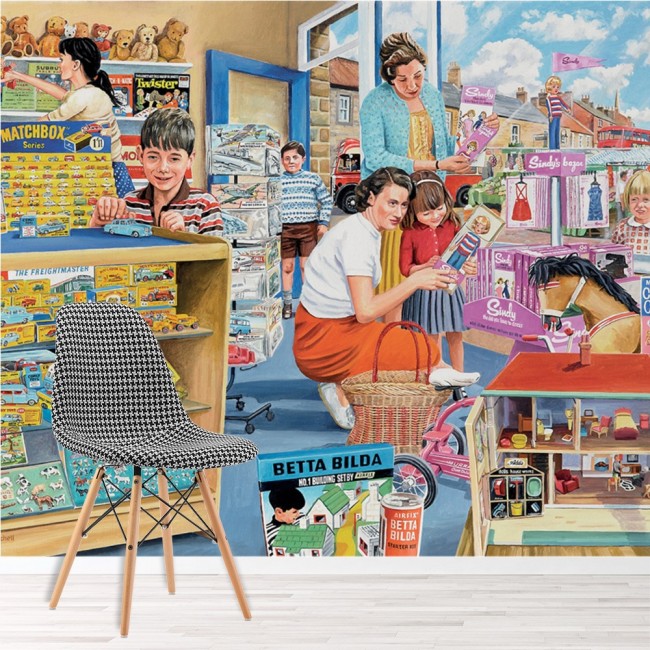
What’s an average day like in the life of Trevor Mitchell?
I made myself a studio by converting an outbuilding at the side of the house. It’s only the size of a garage but it has been my workplace, bunker and cosy retreat for over twenty years now, so my working day begins with a commute of about 5 yards.
Not normally before 9 am, I find I’m more productive later in the day, so you’re more likely to find me burning the midnight oil than making an early start. I try and get all the client correspondence and admin stuff out of the way first thing before starting on my next picture. It’s surprising how much time that can take up.
How I work depends on what stage I’m at with my current project. During the initiation and composition, I work in silence so I can fully concentrate, but when I’m painting I like to have something to listen to if I find anything of interest on the radio or YouTube. If not then I fall back on music or my growing collection of audiobooks.
I’m usually fairly disciplined on workdays, although in warm weather the garden is a distraction and the deck chair is too tempting. But usually, I stick at it and just stop for lunch and dinner with my wife or a quick trip to the shops in Saltaire. I’m not one for spending hours in front of the TV, so I’ll usually be back in my studio in the evening unless we are going out.
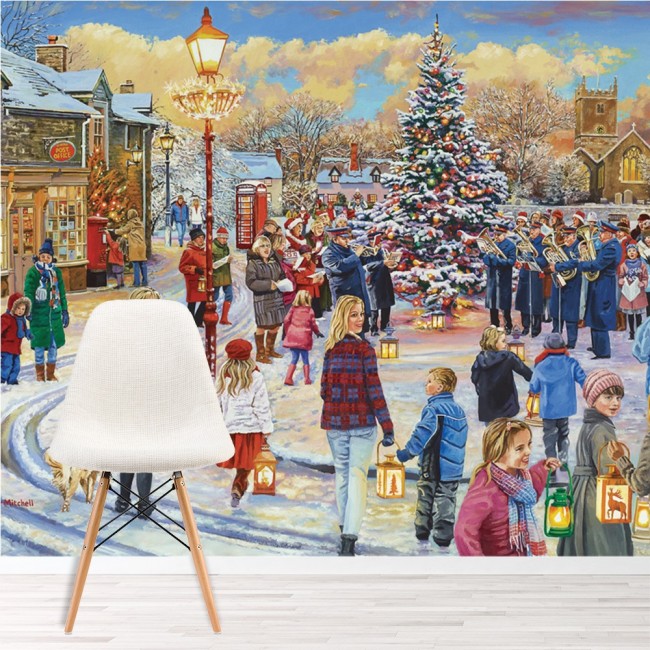
Could you tell us about your creative process from the inception of an idea through to the finished piece?
I think of my creative process as having three phases of equal importance; concept, composition and painting. The first thing is to decide on the narrative, for that is what will resonate with people. What is going in the picture that will make them identify with it, will it trigger a happy memory for example. Then begins the gathering of information and reference material.
The second phase is composition and I know if I don’t get this right, the picture will not look good no matter how carefully I paint it. Many of my illustrations are created for jigsaw puzzles, so they need to be busy pictures with lots of detail - that’s lots of elements to fit in the right proportions. So I take my time to try and ensure the picture is pleasing to the eye as well as interesting. If it’s commercial work I involve the client at this stage because if they want to change anything, this is when I need to know.
Once the composition is finalised I transfer the layout to canvas and begin painting. I prefer working in oil paint on canvas, usually a size between 18x24 and 22x30 inches.
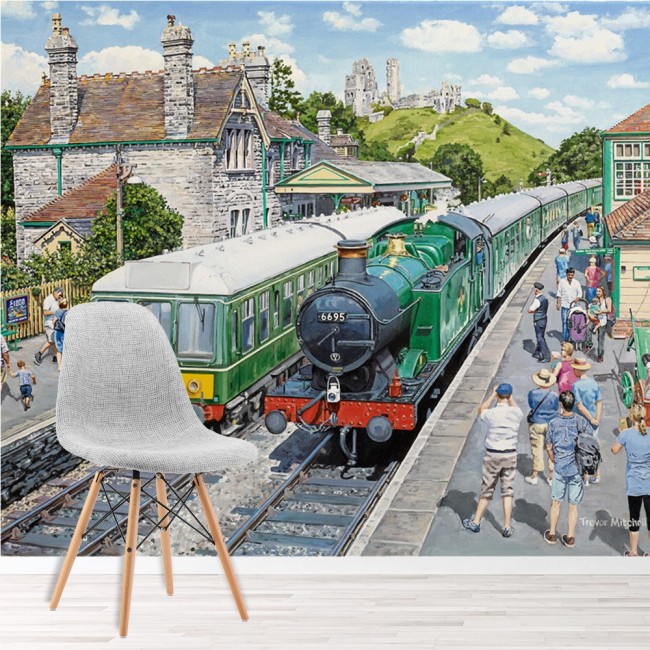
Nostalgia is a huge part of your work - Can you discuss why you love painting images from the past?
Probably a seed was planted in my imagination at an early age. I only had one grandparent who lived to see me grow up, that was my paternal grandmother and she was an entertaining character, a natural storyteller. It was clear from her fond recollections that she loved the community she spent her life in. She was full of amusing tales and certainly made the recent past sound appealing, even though she has known some hard times.
My dad deserves some credit too. He had a keen interest in transport of all kinds, an enthusiasm he passed on to me at an early age by means of books, frequent train rides and visits to the line side. When, as an adult, I perused the books he had gathered over the years, it wasn’t just the trains, buses, local towns or beauty spots that were the main subjects of the books that held a fascination for me; it was the surrounding detail in the old photographs, the urban or rural landscapes which afforded a glimpse into a black and white world that looked so familiar, yet so different.
Streets that were empty of traffic and free for generations of children to play in. Corner shops at the end of rows of terraced houses, like shops I remembered from my childhood but had since disappeared. Sleepy looking marketplaces with a quaint old bus waiting at its terminus, the driver and conductor lolling on the front mudguard in idle conversation as a passenger or two made an unhurried approach. It all looked so appealing I felt an urge to step into the pictures and wander round them in my imagination. Recreating them on canvas seemed the obvious thing to do.
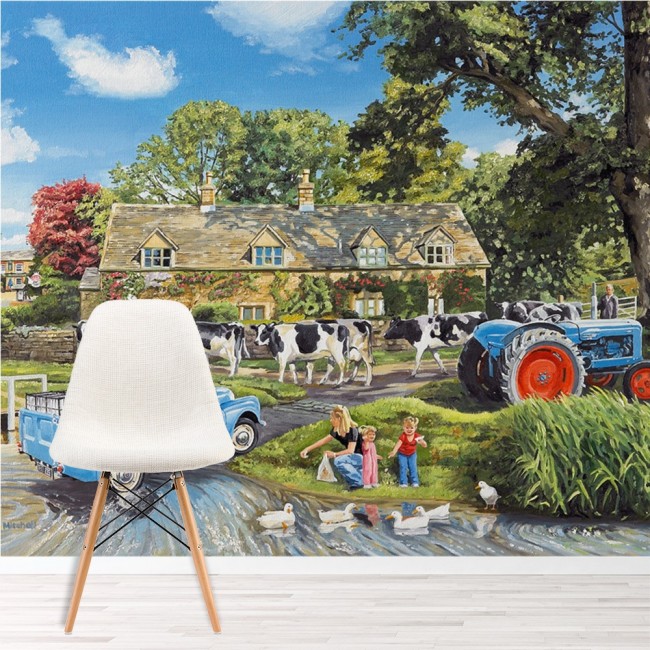
Countryside towns and villages largely feature in your work - Is this a reflection of where you grew up?
Partly, also a reflection of the places in North Yorkshire where my wife and I have always enjoyed holidays and day trips. I just love rural Britain and find so many of its villages and market towns very appealing and paintable.
What inspires your work?
Usually visual stimulus; a view, a beautiful place or a fascinating old photograph which might make a connection with a narrative stored in my memory.
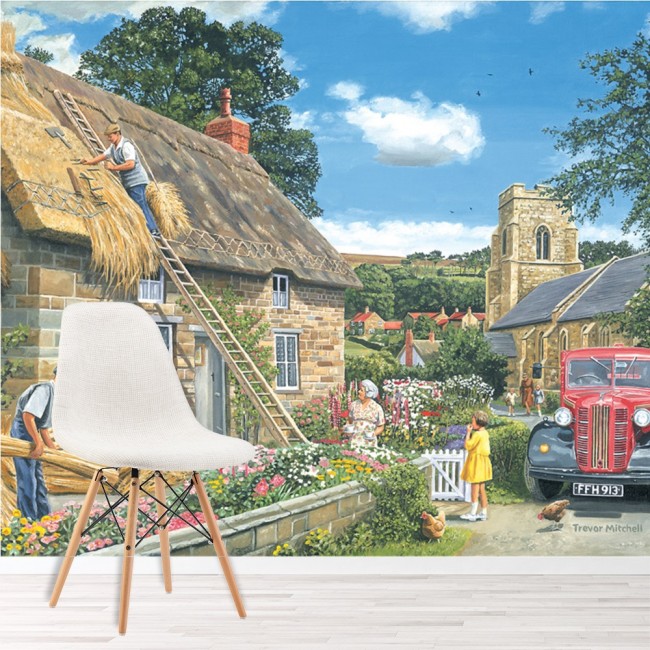
You research each piece before painting - Can you tell us a little about this?
It’s important to get details right so the picture looks authentic. So everything in the scene has to look like it belongs there, be of the same period and have a genuine purpose. That can mean researching all sorts, from clothes and hairstyles to vehicle makes and registration plates. There are plenty of experts out there to put me right if I do slip up!
What’s your favourite period to draw?
The 1950s and 60s. I was born in 1959 so it’s a combination of fascination with what I just missed, along with childhood memories.
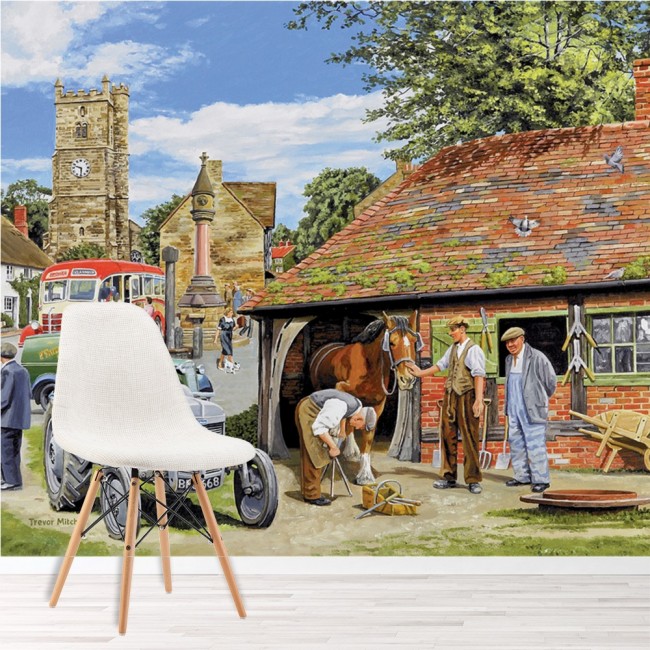
What tools do you use to create your art?
Well, in gathering my reference material and information, I use all the modern technology at my disposal. But the actual art is created using good old fashioned pencils, brushes and paint!
I have an illustrator friend who creates images on his computer and he’s invited me to have a go on his graphics tablet, but it doesn’t appeal to me. I just love the smell of oil paint and the feel of painting with it on a good quality fine grain canvas. It’s gorgeous and I refuse to give it up!
For smaller illustrations though, I may work on an illustration board using gouache combined with water-soluble pencils, which I blend in with my finger!
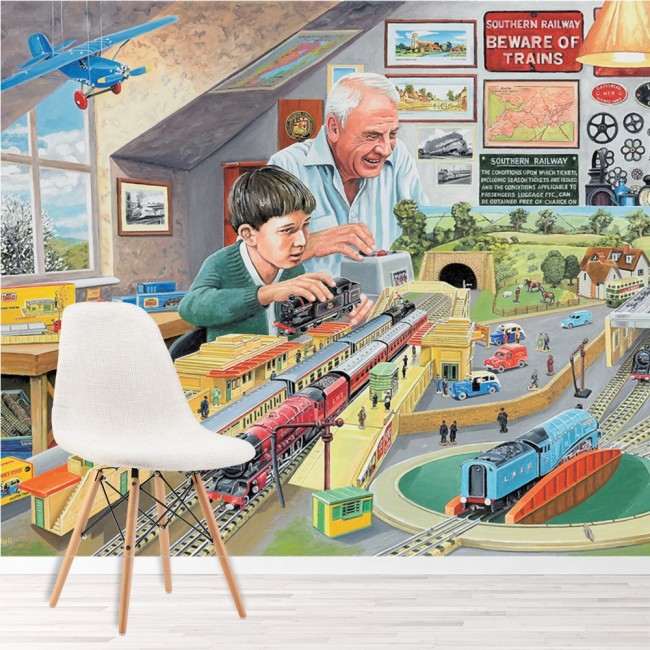
What advice would you give to an aspiring artist?
I have always worked in commercial art and that’s all I feel qualified to talk about. I illustrate for a living and I’m very happy to do so, as the illustrations I am commissioned to create so closely resemble the pictures I painted as a hobby. So I would need to know if they felt the same way, or would they consider that a sacrifice.
It’s many years since I made the transition from graphic design work, but I can remember feeling guilty because painting felt more like play than work. I actually felt like I was skiving! That was ridiculous because being a reasonably successful artist and illustrator turned out to be far more lucrative than being an unsuccessful graphic designer. So I guess the moral is do what you love and play to your strengths.
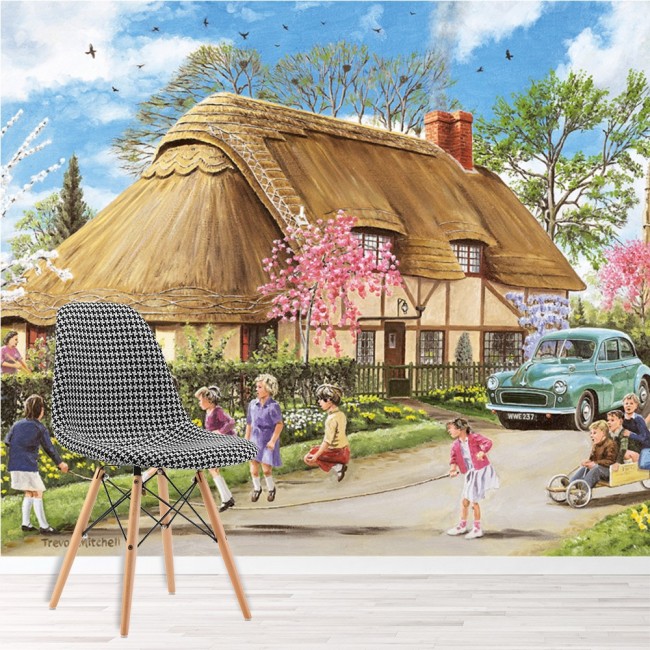
Have you got any big plans in the future?
Not really - I’m settled into a regular pattern of annual projects I enjoy working on. I would like to attempt the coast to coast walk though.
